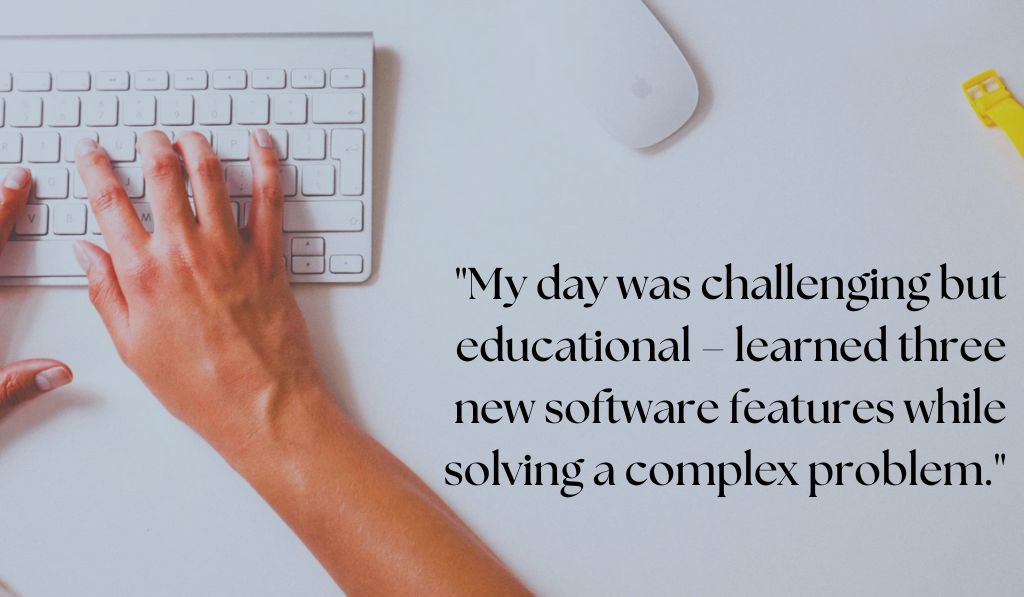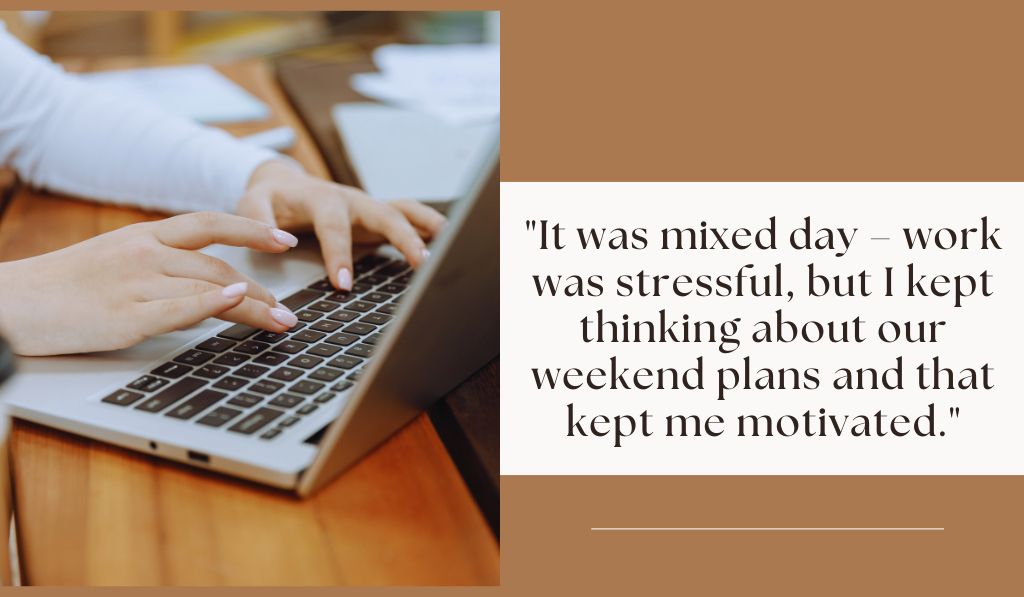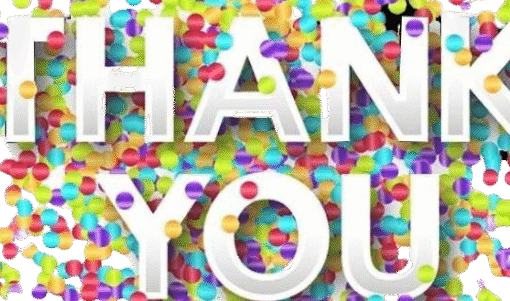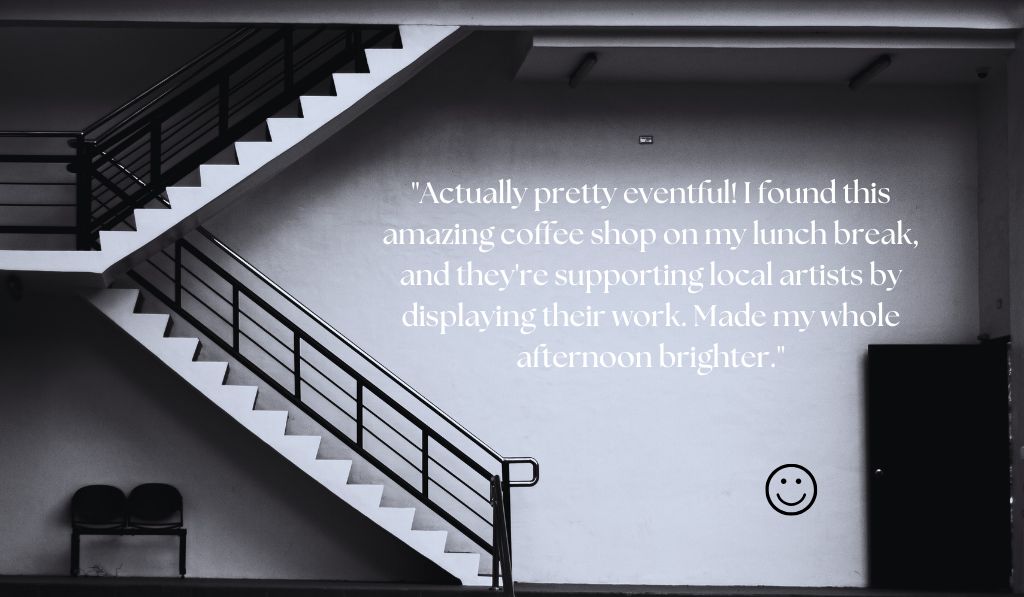The simple question “How was your day?” appears in countless daily conversations, however most people reply with automated, standard answers like “wonderful,” “great,” or “ok.”
This overlooked opportunity for real connection and extensive dialogue affects relationships, professional networking, and personal growth.
Research in interpersonal conversation indicates that thoughtful responses to everyday questions can significantly enhance relationships and create lasting impressions.
This complete guide explores the psychology behind this common query, provides strategic response frameworks, and offers over a hundred innovative alternatives to transform normal exchanges into engaging conversations.
Understanding the Psychology Behind “How Was Your Day?”
When someone asks about your day, they’re often looking for more than surface-level information.
This query serves multiple psychological and social functions: it demonstrates care and interest, initiates bonding opportunities, and provides a socially acceptable way to gauge someone’s emotional state and availability for deeper conversation.
The choice between offering a short or lengthy response depends on numerous factors, including the nature of the relationship, the setting of the conversation, and the current mood or circumstances of both parties.
Understanding these dynamics helps you craft responses that fit the situation and strengthen connections as they should be.
Different people ask this question with various levels of genuine interest. Colleagues may ask out of politeness, while close friends and family members often seek genuine sharing and connection.
Recognizing these variations allows you to respond appropriately while building stronger relationships.
The Problem with Generic Responses
Most people have default answers ready when asked, “How is your day going?” Phrases like “Good,” “Fine,” or “Not bad” are often thrown out without much thought. These responses, while socially acceptable, create several conversation barriers:
Conversation Killers
Generic responses often end conversations instead of encouraging further discussion. They signal disinterest or unavailability for deeper connection.
Missed Relationship Opportunities
Every interaction presents chances to strengthen relationships, share experiences, and learn about others. Generic responses waste these opportunities.
Emotional Disconnect
Automatic responses prevent genuine emotional expression and sharing, limiting authentic human connection.
Professional Limitations
In business settings, thoughtful responses can reveal communication skills, cultural awareness, and relationship-building abilities that standard answers can’t offer.
Top 10 Strategies for Meaningful “How Was Your Day?” Answers

1. The Storytelling Approach
Transform your day into a brief, engaging narrative that highlights interesting moments, challenges overcome, or unexpected discoveries. This technique invites follow-up questions and demonstrates your ability to find meaning in ordinary experiences.
Examples:
- “Actually pretty eventful! I found this amazing coffee shop on my lunch break, and they’re supporting local artists by displaying their work. Made my whole afternoon brighter.”
- “It started rough with traffic delays, but I ended up having the most productive meeting of the week due to the extra preparation time I got.”
Best Used When: Speaking with friends, family, or colleagues who have time for conversation and show genuine interest.
2. The Emotional Honesty Method
Share your true emotional state while maintaining appropriate boundaries. This approach builds trust and encourages reciprocal sharing.
Examples:
- “Honestly, it’s been tough, but I’m learning a lot about problem-solving under pressure.”
- “I’m feeling really energized today – completed some projects I’ve been putting off for weeks.”
Best Used When: With trusted friends, family members, or in situations where emotional authenticity is valued.
3. The Gratitude Highlight Technique
Focus on positive moments or things you’re grateful for, even during difficult days. This technique spreads positivity and demonstrates resilience.
Examples:
- “Tough day overall, but my colleague brought me coffee when I needed it most. Sometimes small kindnesses make all the difference.”
- “Really grateful for the beautiful weather – took a walk during lunch and felt recharged.”
Best Used When: You want to maintain positivity, encourage others, or redirect attention towards positive aspects of life.
4. The Learning and Growth Frame
Present challenging situations and experiences as learning opportunities, demonstrating personal development mindset and professional maturity.
Examples:
- “Challenging but educational – learned three new software features while solving a complex problem.”
- “I made some mistakes today, but each one taught me something valuable for next time.”
Best Used When: In professional settings, with mentors, or when you want to demonstrate a growth mindset.
5. The Future-Focused Response
Connect your day to upcoming plans, goals, or anticipated activities, showing forward-thinking and purpose orientation.
Examples:
- “Productive day setting up for tomorrow’s big presentation – feeling prepared and excited.”
- “Good foundation day – organized everything I need for this weekend’s family gathering.”
Best Used When: You want to demonstrate planning skills, share excitement about future events, or invite others to ask about your plans.
6. The Comparative Context Method
Reference how today compared to recent days or expectations, providing context that makes your response more informative and interesting.
Examples:
- “Much better than yesterday – finally got unstuck on that project I mentioned.”
- “Surprisingly calm compared to the chaos of this week. Sometimes the universe gives you a break.”
Best Used When: Speaking with people who understand your current situation or ongoing challenges.
7. The Specific Detail Approach
Share one particular, interesting detail that makes your day unique and memorable, inviting curiosity and follow-up questions.
Examples:
- “Interesting day – I met someone at the grocery store who turned out to be from my hometown. Small world moments always fascinate me.”
- “Learned that my favorite restaurant has been family-owned for three generations. I love discovering those kinds of stories.”
Best Used When: You want to create engaging conversation, share interesting observations, or show curiosity about the world.
8. The Accomplishment Celebration
Highlight achievements, both big and small, while remaining humble and relatable. This approach shares positive energy and can inspire others.
Examples:
- “Productive day – I finally organized my home office and can actually find things now!”
- “Small victory, but I stuck to my morning workout routine despite the early meeting schedule.”
Best Used When: You want to share positive momentum, inspire others, or celebrate progress without appearing boastful.
9. The Connection-Building Response
Craft responses that naturally lead to questions about the other person, demonstrating genuine interest in their experiences.
Examples:
- “Had one of those days where everything clicked. How about you? I hope your presentation went well.”
- “Busy but good – reminded me why I love what I do. Speaking of work satisfaction, how are you feeling about your new role?”
Best Used When: You want to deepen relationships, show genuine interest in others, or create reciprocal sharing opportunities.
10. The Contextual Adaptation Strategy
Tailor your response to the specific person, setting, and situation, demonstrating social awareness and communication flexibility.
- Professional Context: “Challenging but rewarding – solved a complex problem that’s been ongoing for weeks.”
- Family Context: “Exhausting but good – work was intense, but I’m excited to hear about everyone’s day.”
- Social Context: “Pretty great actually – tried that new restaurant you recommended and loved it.”
Best Used When: You recognize the importance of matching your communication style to different relationships and situations.
Read also: Happy New Month Prayers: Powerful Blessings and Messages for a Fresh Start
Situational Response Frameworks

Professional and Workplace Responses
In professional settings, responses should balance authenticity with appropriateness, demonstrating competence while building collegial relationships.
- For Supervisors: “Productive day with some interesting challenges. I’d love to get your thoughts on a strategy question when you have time.”
- For Colleagues: “Solid day – made good progress on the quarterly report. How’s your project timeline looking?”
- For Clients: “Excellent, thanks for asking. We’ve made significant progress on your account today.”
Family and Close Relationships
With family members and close friends, responses can be more detailed and emotionally open, fostering deeper connections and support.
- For Partners: “Mixed day – work was stressful, but I kept thinking about our weekend plans and that kept me motivated.”
- For Parents: “Really good, Mom. Remember that opportunity I mentioned? Got some encouraging news today.”
- For Children: “Fun day! I learned something new at work today, just like you learn new things at school.”
Social and Casual Interactions
Social settings allow for creative, engaging responses that can spark interesting conversations and new connections.
- For Acquaintances: “Surprisingly interesting – discovered this amazing bookstore downtown. Are you much of a reader?”
- For New Connections: “Great, thanks! I’m still adjusting to the area, but finding wonderful surprises like this coffee shop.”
- For Service Providers: “Going well, thanks! I appreciate you asking – how has your day been treating you?”
Cultural and Contextual Considerations
Different cultures approach this question with varying expectations for depth, honesty, and reciprocal sharing. Understanding these variations prevents miscommunication and demonstrates cultural sensitivity.
- American Context: Generally expects brief, positive responses with optional elaboration based on relationship closeness.
- European Context: Often welcomes more detailed responses and honest sharing, even including challenges or problems.
- Asian Context: May emphasize harmony and positive framing, with personal struggles shared only in close relationships.
- Professional International Context: Usually requires neutral, professional responses that avoid personal details while maintaining warmth.
Advanced Communication Techniques
The Bridge Response Method
Use your day as a bridge to topics that interest the other person or relate to shared experiences and interests.
“Productive day working on data analysis – actually made me think about that statistics course you mentioned taking. How’s that going?”
The Vulnerability Balance Approach
Share appropriate vulnerability that invites connection without overwhelming the conversation or crossing professional boundaries.
“Challenging day that reminded me why having good friends matters. Thanks for asking – it just helps to talk about it.”
The Curiosity Catalyst Strategy
Frame your response to naturally lead to learning about the other person’s experiences, interests, or perspectives.
“Interesting day full of problem-solving. Got me thinking about your engineering background – do you miss the technical challenges?”
When to Use Different Response Types
Short Responses Are Appropriate When:
- Time is limited for both parties
- The relationship is professional or distant
- The setting is public or formal
- You’re not in the mood for extended conversation
- The asker seems to be asking out of politeness rather than genuine interest
Detailed Responses Work Best When:
- You have time and privacy for conversation
- The relationship is close or developing
- The other person shows genuine interest
- You want to deepen the relationship
- Sharing may provide mutual benefit or support
Common Mistakes to Avoid
Over-sharing in Professional Settings
Providing too much personal information in business contexts can create discomfort and seem unprofessional. Maintain appropriate boundaries while still being authentic.
Automatic Negative Responses
Consistently responding with complaints or negativity can strain relationships and create a reputation for being difficult or pessimistic.
Ignoring Social Cues
Failing to read the other person’s interest level, available time, or emotional state can cause one-sided conversations or social awkwardness.
Cultural Insensitivity
Not adapting your response style to different cultural contexts can create misunderstandings or appear disrespectful.
Read more: Happy Birthday Wishes in Tamil: Celebrating Life with Traditional Heart and Modern Joy
Building Your Response Repertoire
Daily Practice Techniques
Reflection Exercises
Spend 5 minutes each evening identifying three interesting, challenging, or meaningful moments from your day.
Storytelling Practice
Practice turning ordinary events into brief, engaging narratives that highlight learning, growth, or connection.
Emotional Vocabulary Building
Expand your emotional vocabulary beyond “good” and “bad” to express nuanced feelings and experiences.
Context Awareness Training
Practice adapting your communication style to different people and situations throughout your day.
Response Banking Strategy
Develop a mental collection of response templates that you can adapt to specific situations:
- Achievement Bank: Responses that highlight accomplishments and progress
- Learning Bank: Responses that frame challenges as growth opportunities
- Connection Bank: Responses that invite reciprocal sharing
- Gratitude Bank: Responses that highlight positive moments and appreciation
The Science of Social Connection
Research in social psychology demonstrates that meaningful responses to routine questions significantly impact relationship quality and personal well-being.
When a couple is in a good mood and feeling connected, conversation starters become invitations to deeper connection. This principle applies beyond romantic relationships to all forms of social interaction.
Studies show that people who provide thoughtful responses to routine questions experience:
- Stronger professional networks
- Deeper personal relationships
- Enhanced communication skills
- Increased social confidence
- Better emotional well-being
Digital Age Considerations
In our increasingly digital world, “How was your day?” often appears in text messages, emails, and social media interactions. Digital responses require additional consideration:
- Text Message Responses: Can be more casual and include emojis, but should still demonstrate thoughtfulness.
- Email Responses: Should match the formality of the overall communication while providing appropriate detail.
- Social Media Responses: Consider your audience and privacy settings while sharing details about your day.
- Video Call Responses: Combine verbal responses with non-verbal cues to enhance connection despite physical distance.
Response Examples by Day Type
Excellent Days
- “Fantastic! Everything seemed to click today – finished my presentation, got great feedback, and even found time for a walk in the sunshine.”
- “One of those rare days where everything goes better than planned. I’m trying to figure out what I did differently so I can repeat it.”
Challenging Days
- “Tough day, but I’m proud of how I handled the challenges. Sometimes difficult days teach us the most about our capabilities.”
- “Honestly difficult, but I’ve got good support and I’m learning a lot about resilience.”
Ordinary Days
- “Pleasantly ordinary – sometimes the best days are those without drama or stress.”
- “Nothing spectacular, but I noticed some small details I usually miss when life gets hectic.”
Mixed Days
- “A real mixed bag – difficult morning but a breakthrough afternoon. It reminded me why I love problem-solving.”
- “Up and down day, but the good moments really outweighed the challenging ones.”
Long-term Relationship Building
Consistently providing thoughtful responses to “How was your day?” contributes to long-term relationship success through:
Creating Emotional Safety
Regular sharing builds trust and emotional intimacy over time.
Establishing Communication Patterns
Good response habits encourage others to share more openly with you.
Building Mutual Interest
Thoughtful responses show that you value the relationship and find the other person’s interest meaningful.
Developing Empathy
Regular practice in sharing and receiving personal experiences enhances emotional intelligence and empathy.
Read also: The Complete Guide to Birthday Thank You Messages: 100+ Heartfelt Ways to Express Gratitude
Conclusion: Transform Routine into Connection
The question “How was your day?” offers daily opportunities to build stronger relationships, demonstrate communication skills, and create meaningful connections.
By moving beyond generic responses and embracing thoughtful, authentic sharing, you can transform routine interactions into relationship-building moments.
Remember that effective responses balance authenticity with appropriateness, consider the needs and interests of others, and adapt to different contexts and cultures.
The goal is not to provide perfect responses every time, but to approach these common interactions with intentionality and genuine interest in human connection.
By responding thoughtfully instead of using a standard “fine” or “okay,” you can enhance your relationship with each other.
Start practicing these strategies today, and watch how your daily conversations become more engaging, meaningful, and relationship-enhancing.




One thought on “How Was Your Day? A Complete Guide to Meaningful Responses”